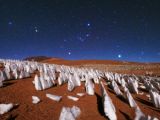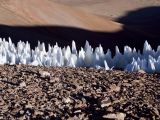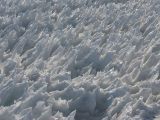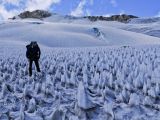A new and positively gorgeous photo made public by scientists at the European Southern Observatory earlier today shows a small army of peculiar ice formations observed in the Atacama Desert in South America.
The stunning view, available in the gallery below, was produced by science journalist, photographer and European Southern Observatory collaborator Babak A. Tafreshi.
So what exactly are we looking at?
In the photo's description, researchers explain that these bizarre tooth-like ice sculptures photographer Babak A. Tafreshi chanced to come across while in the Atacama Desert are called penitentes.
Such nature-made formations come into being at high altitudes, where low pressure, moisture and low temperatures all contribute to making ice and snow freeze in such peculiar shapes.
Penitentes are known to take the form of shark teeth or tall thin blades sticking out of the ground. Further, they are in the habit of following the Sun just as flowers do. Pretty neat, right?
“The low pressure, moisture and temperature at these altitudes help to create this interesting and rare behavior in the freezing of ice,” European Southern Observatory scientists say.
“The strange structures also have a tendency to orient themselves towards the Sun, which is why they are all perfectly aligned like a carefully tended garden of ice,” they go on to detail.
Although they've been forming on our planet for centuries now, penitentes were first scientifically described in 1839 by none other than Charles Darwin.
Historical records say that the English naturalist and geologist encountered such formations in 1835 while en route from Santiago de Chile to the city of Mendoza in Argentina.
Stars are pictured alongside the penitentes
This view obtained by Babak A. Tafreshi and shared with us ordinary folks by European Southern Observatory scientists doesn't just show penitentes in the Atacama Desert.
It also shows a few of our neighboring stars. For starters, there's Sirius, now the absolute brightest star in the Earth's night sky, sitting just atop the central hill.
Canopus, the second brightest object in our sky after Sirius, also makes an appearance in the right side of the frame. Betelgeuse, an ancient red supergiant, is also visible.
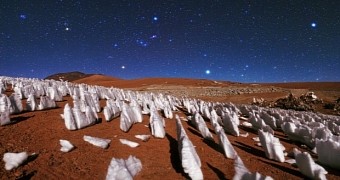
 14 DAY TRIAL //
14 DAY TRIAL // 
